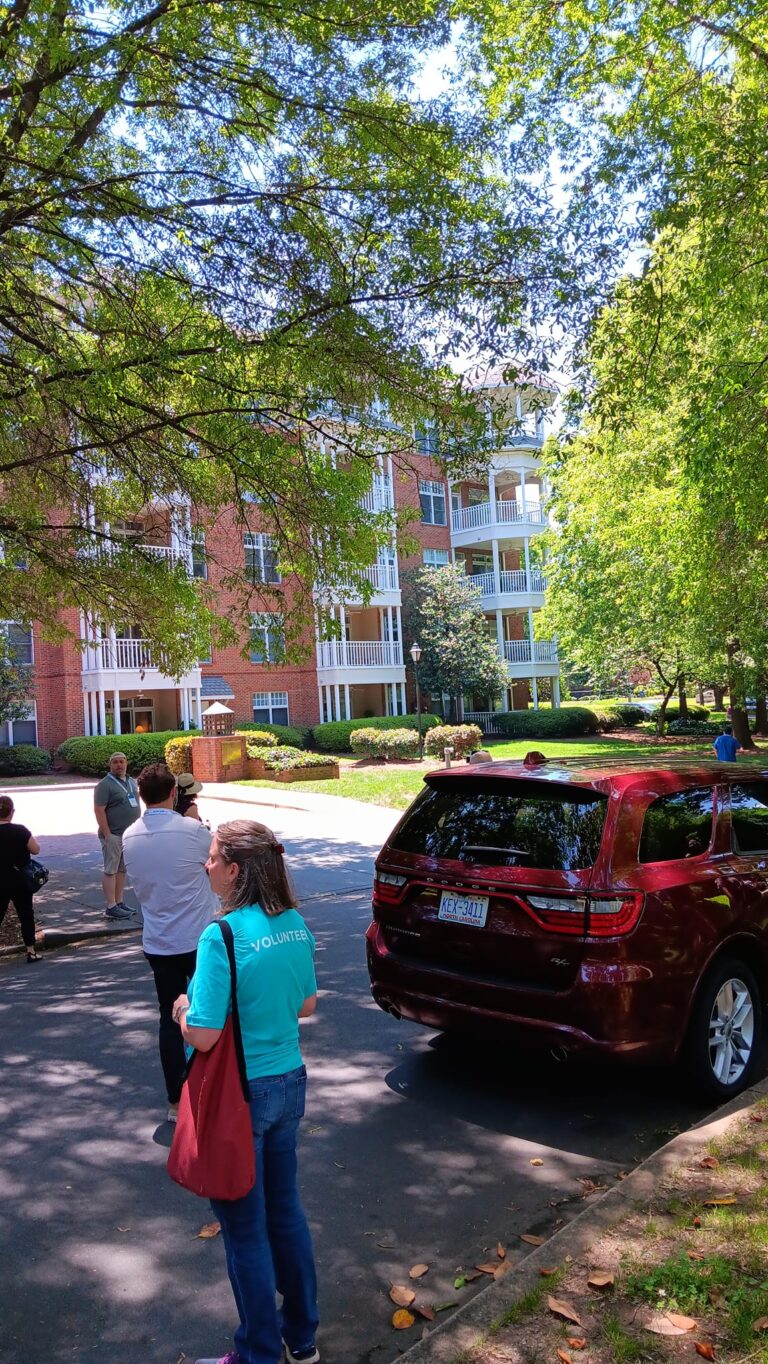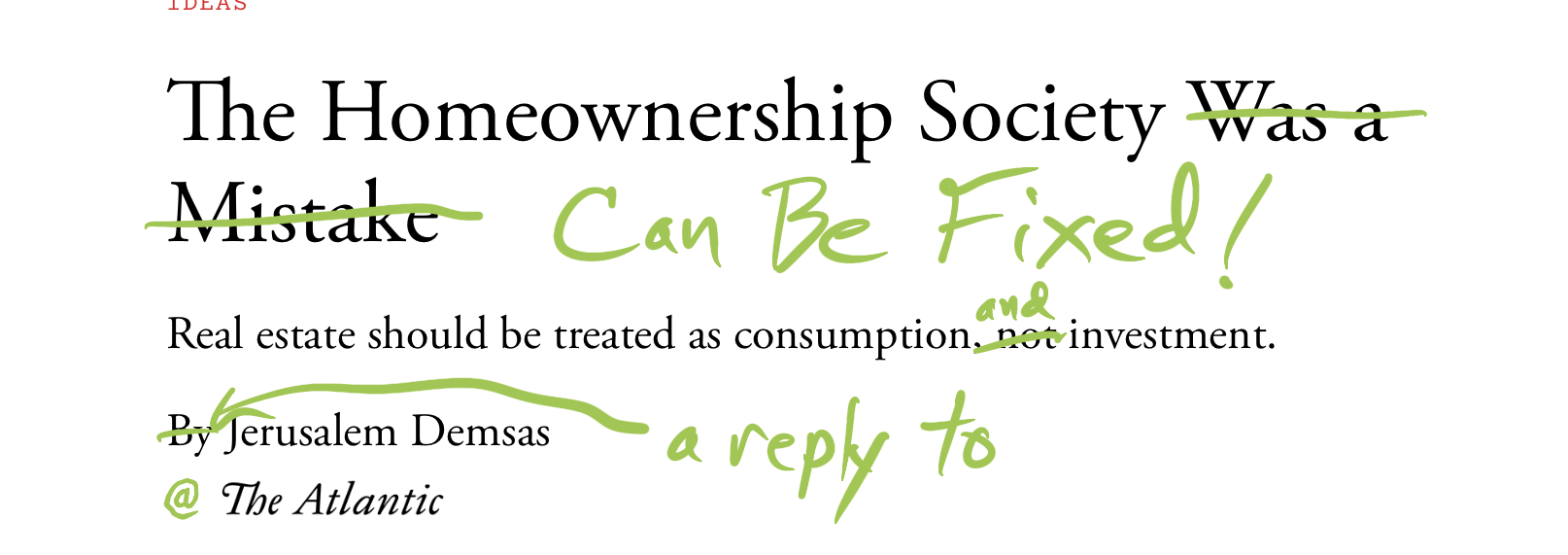Physical Address
304 North Cardinal St.
Dorchester Center, MA 02124
Physical Address
304 North Cardinal St.
Dorchester Center, MA 02124
I’ve noticed numerous stories and tweets about a building boom: for example, a recent CNBC story asserts that the number of new apartments is “at a 50-year high.” Various twitterati have used this claim to support their own points of view: some claim that rents are stabilizing because of this new surge in supply, while others argue that the failure of rents to decline shows that new supply doesn’t reduce rents. But is supply really increasing that rapidly? Federal statistics on housing construction are at a Census housing data webpage. I looked at the “New Housing Units Completed” table and found that about 216,000 housing units in structures with over five units were completed in the first half of 2023. On the positive side, this is definitely an improvement over the 2010s, when the economy was still recovering from the 2008 recession. For example, in the first half of 2019, just over 169,000 such units were built, and 2018 was pretty similar. But is construction still up to Reagan-era levels? Not really. In the first half of 1986, almost 258,000 relevant units were completed. And in the first half of 1973, just over 378,000(!) such units were built. And these levels of construction were in a less populous country. Today the U.S. population is about 335 million, up from about 240 million in 1986 and 212 million in 1973. So if construction had kept up with population, our new unit count would be about 1/3 higher than in 1986, and almost 60 percent higher than in 1973. Instead, construction went down. To put the facts another way: our half-year multifamily construction rate is about 644 per one million Americans for 2023, down from 1075 per million in 1986 and 1783 per million in 1973. That’s not my idea of a […]
Some weeks ago, I was participating in a Zoom discussion on NIMBYism, and someone asked: are Republicans and conservatives more pro-housing than Democrats and liberals, or less so? After examining some poll data, I discovered that the answer depends on how the question is asked. A 2023 Yougov poll asked respondents to choose between two alternative views: “People should be free to buy land and develop real estate where they please” and “The government should limit where people are allowed to build things.” 64 percent of Republicans favored the free-market option, as opposed to only 47 percent of Democrats. Similarly, a 2023 California poll asked Californians whether state government should “ease current land use and environmental restrictions to increase the supply of housing.” 64 percent of Republicans favored less regulation, as opposed to only 48 percent of Democrats. Similarly, 62 percent of conservatives and only 49 percent of liberals favored less regulation. Thus, it seems that where development issues are framed as a choice between government regulation and freedom, Democrats are more pro-regulation and Republicans more pro-freedom. Where questions about regulation exclude the magic word “government”, partisan differences become a bit narrower. A July 2022 Yougov poll asked about removing “Regulations and codes that prevent developers from constructing more housing”. Republicans favored the free-market answer by a 43-40% margin, while Democrats disagreed by a 45-38% margin. Polls that don’t directly reference regulation sometimes show that Democrats are more pro-housing. For example, a June 2022 Yougov poll asked respondents whether more apartments should be built: 83 percent of Democrats said yes, as opposed to 68 percent of Republicans. When asked whether more apartments should be built in respondents’ “local area”, the Democratic percentage dropped to 74 percent, and the Republican percentage to 50 percent. When a poll asks generally about “density” […]
“Renting in Providence puts city councilors in precarious situations.” That was the Providence Journal’s leading headline a few days ago, as the legislature waited for Governor Daniel McKee to sign a pile of housing-related bills (Update: He signed them all). Rhode Island doesn’t have a superstar city to garner headlines, but it’s housing costs have mounted as growth has crawled to a standstill. But unlike in Montana and Washington, Rhode Island’s were largely procedural, aiming to lubricate the the gears of its existing institutions rather than directly preempting local regulations. House Speaker Joseph Shekarchi (D-Warwick), who championed the reforms, clearly drew on his professional expertise as a zoning attorney to identify areas for procedural streamlining. Specific and objective Six bills transmitted to the governor cover the general rules affecting most Rhode Island zoning procedures: S 1032 makes it easier to acquire discretionary development permission. Municipalities cannot enforce regulations that make it near-impossible to build on legacy lots that do not meet current regulatory standards. Municipalities can more quickly issue variances and modifications. (Rhode Island draws a unique distinction between minor and substantial variances, labeling the former “modifications” and subjecting them to a simpler process. A substantial variance must go before a board for approval; a modification can be approved administratively unless a neighbor objects. Municipalities must issue “specific and objective” criteria for “special use permits”, otherwise those use are automatically allowed as of right. That phrase – specific and objective – shows up again and again in Speaker Shekarchi’s bills. S 1033 requires that zoning be updated to match a municipality’s own Comprehensive Plan within 18 months of a new plan’s adoption. It also requires an annually updated “strategic plan” for each municipality, although the content and legal force of the strategic plans are unclear to me. S 1034 broadly […]
Today’s Wall Street Journal includes a front-page article about sky-high lawyer incomes. The article points out that top lawyers can earn $15 million per year or more. Why is this relevant to urbanism or markets? Because one common argument against new condos (at least in NYC) is that they will be bought by foreign investors instead of by local residents. In turn, this argument rests on the assumption that new housing is so expensive that the local rich can’t afford it. But someone who earns $15 million per year can afford almost all new condos, even in Manhattan. When I bought a condo in Atlanta many years ago, the sticker price was about 2.6 times my salary. Even if you assume no one will pay more than that, this means that a $15 million household can pay for a $39 million condo. Almost every new condo in Manhattan costs less than $39 million. My latest zillow.com search reveals that 541 units in condos and co-ops were built in 2020 or later. Only seven of those units cost over $39 million. In fact, only 34 cost over $15 million, and the majority (376 of the 541) cost under $5 million- certainly far more than I could ever afford, but affordable even for an attorney earning $1 or 2 million per year.

One common NIMBY* argument is that new housing (or the wrong kind of new housing) will “destroy the neighborhood.” For example, one suburban town’s politicians fought zoning reform in New York by claiming that allowing multifamily housing “is a direct assault on the suburbs.“ Indeed, many people do seem to believe that apartments and houses are somehow incompatible. But I saw an interesting counterexample recently. A couple of weeks ago, I attended the CNU (Congress for the New Urbanism) conference in Charlotte, North Carolina. CNU usually sponsors neighborhood tours, and I toured Myers Park, one of the city’s richest neighborhoods. Myers Park was built in the 1910s; most blocks are dominated by large single-family houses with an enormous tree canopy. Although Myers Park is only a couple of miles from downtown Charlotte, it certainly looks suburban, if by “suburban” you mean low-density and dominated by houses. (According to city-data.com, the neighborhood density is just below 4000 people per square mile, less than that of affluent Long Island suburbs like Great Neck and Cedarhurst). And yet on one of the neighborhood’s major streets (Queens Road) apartments and houses seemed to alternate. This does not seem to have reduced home values; the average value of detached homes there is over $1 million, about four times the statewide average. Moreover, Myers Park apartments are not the sort of “missing middle” housing that is virtually indistinguishable from a house. I saw a five-story building in Myers Park: not a skyscraper but definitely not something that looks like its neighbors. Not far away is a four-story building that looks like it has a few dozen units. In other words, apartments and houses can coexist, even in places that are very suburban in many ways. *As many readers of this blog probably know, NIMBY is an […]
A group of researchers at the Urban Institute came out with a new study on zoning and housing affordability. At governing.com, a headline about the study screamed: “Zoning Changes Have Small Impact on Housing Supply.” The Governing writer’s spin was, of course, “there’s no evidence it [upzoning] makes housing cheaper.” Governing has published numerous articles that criticize pro-supply zoning reform (one of which I critiqued on this blog), so this conclusion seems to fit in with its general point of view. The most important conclusion (to me) of the study is that it reinforces the commonsense view that lower housing supply leads to higher costs. In particular, the study concludes: “Reforms tightening regulations are associated with increased rents, potentially worsening conditions for low- and moderate-income renters.” (page 4, emphasis mine). What about upzonings (reforms that allowed more construction)? The study concludes that they “lead to a 0.8 percent increase in housing supply, on average.” (p. 28). How small is 0.8 percent? In fast-growing Harris County, Texas (Houston and its inner ring suburbs), 17 percent of the county’s 1.885 million units have been built since 2010, or about 1.7 percent per year. So 0.8 percent increase would be only five or six months’ worth of new housing in Houston- not a huge amount. Given the miniscule amount of reform the lack of impact on housing prices should hardly be surprising. In other words, if zoning allows six months’ worth of new housing (compared to the pre-reform status quo), things stop getting worse but don’t really get better. If zoning allows less housing, things get worse.

I'm pre-disposed to find reasons to love Gregg Colburn and Clayton Page Aldern's book *Homelessness is a Housing Problem*. But the book moved my priors in the opposite direction than the authors intended.

In a recent article, Jerusalem Demsas identified a major housing policy problem but gave an unworkable solution. Michael D. Nahas proposes a workable solution: land-value contracts.
An article in Curbed by Lane Brown has gotten much publicity in Twitter. The article makes two factual claims: 1) New York City is still losing households, and thus there was no reason for rents to go back up in 2021-22; and 2) landlords are conspiring to keep supply down because some apartments are still vacant. Since the city seems extremely busy to me, the first claim seemed a bit insane. But having said that, I live in touristy Midtown Manhattan two blocks from Central Park, so my experience is probably not an argument-settler. Brown relies on U.S. Postal Service change of address data. Brown reasons: more people filed change of address forms to move out of the city than filed change of address forms to move into the city. Thus, the city is continuing to lose people. But as Brown himself admits, change-of-address data misses a lot. He admits that this data “misses [moves] to the city from abroad.” Because of COVID-related travel bans, immigration presumably declined in 2020. But legal immigration has rebounded to pre-COVID levels, and some of that increase may have spilled over into New York. Change-of-address data might not include recent graduates and other people who left their parents elsewhere in the U.S. to move into the city, because those people might still be getting mail at their parents’ houses. Such data also might not reflect people who left the city temporarily in 2020 but didn’t bother with change-of-address requests because they still picked up mail at their old homes. Most importantly, change-of-address trends do not reflect people deciding to leave roommates and get their own apartments, at least not if people changed addresses within the city. This means that even if population is stable or declining, the number of households looking for apartments […]
In recent years, I have thought of Herbert Hoover as sort of an urban policy villian, thanks to his promotion of zoning. But I recently ran across one of his memoirs in our school’s library. (Hoover’s memoirs were a multivolume set, and this particular volume related to his service as Secretary of Commerce and President). Hoover devotes less than a page zoning, noting that it was designed “to protect home owners from business and factory encroachment into residential areas.” He doesn’t mention the parts of zoning that have stunted housing supply in recent decades, such as the prohibition of apartments in homeowner zones, and minimum lot sizes. In fact, he brags about increases in housing construction when he was Secretary of Commerce, writing that “The period of 1922-28 showed an increase in detached homes and in better apartments unparalleled in American history prior to that time.” In particular, he notes that 449,000 dwelling units were built in 1921, and that this number rose to 753,000 in 1928. He claims some of the credit for this, primarily because the Commerce Department helped formulate a standard building code which he believed would be less costly than existing local codes, and because the Department sought to lower interest rates on second mortgages. One common argument against new housing is that because some new housing has been built, therefore there has been a building boom sufficient to meet demand. By contrast, Hoover was not a believer in the idea that any housing construction equals enough housing construction; he notes that “The normal minimum need of the country to replace worn-out or destroyed dwellings and to provide for increased population was estimated by the Department at 400,000-500,000 dwelling units per annum.”* *By the way you might be wondering how these numbers compare to current levels […]